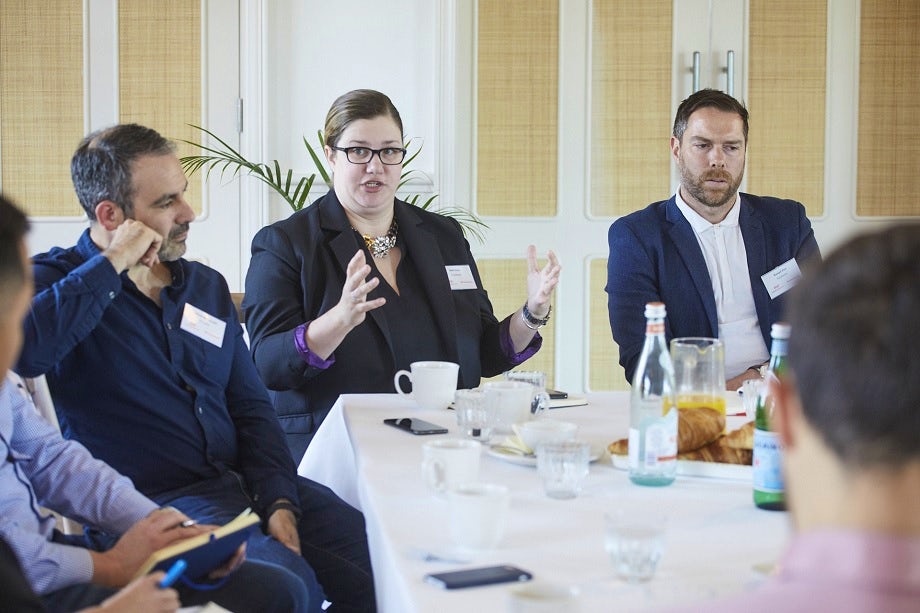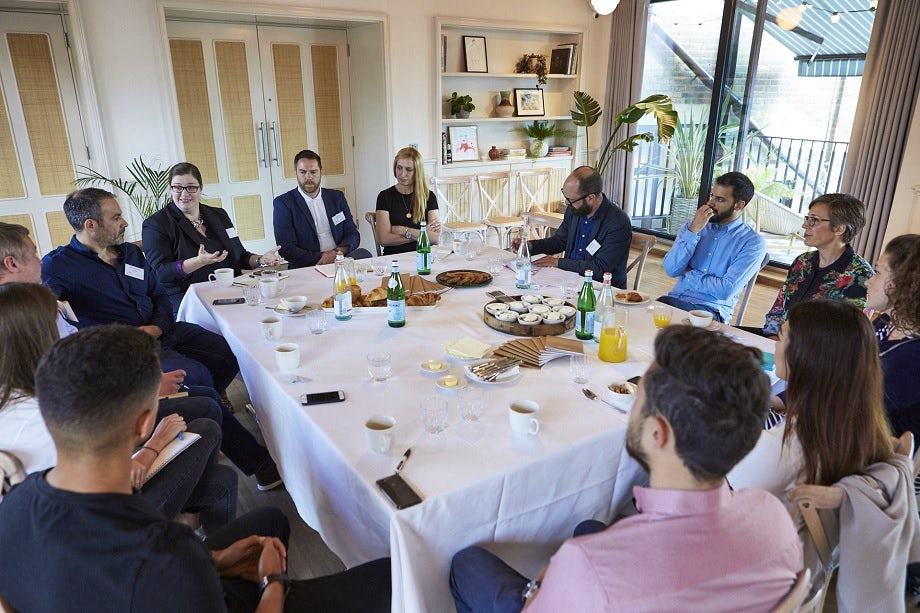At a roundtable hosted by Marketing Week and Econsultancy in partnership with Facebook, marketers debated the cost of hindering consumers on the way to making a purchase, and how brands can keep them coming back with smooth, hassle-free experiences.
Friction is the enemy of modern retail – and indeed of the consumer.
Friction is anything that holds a shopper up in their journey from wanting something to getting it, whether that’s misguided marketing messages, bad website usability or long waits for delivery. The opportunity cost to ecommerce brands of getting it wrong could be £36bn this year, as mentioned in a new report about ‘Zero Friction Shopping’ by Facebook. The report, developed in conjunction with Boston Consulting Group, also details the key sources of friction during the customer journey.
To explore its findings, Marketing Week and Econsultancy partnered with Facebook to invite a group of brand marketers to share their insights and experiences at a roundtable debate.
There are a range of reasons that friction might be present in the customer journeys that brands offer, and they are not always easily avoidable. Sometimes friction is an inevitable consequence of the business model.
Our experience of trying to join things up is still evolving. That shouldn’t be much of a surprise when we’re a legacy business.”
-Sabino Petruccelli, Arcadia
At healthcare company GSK, the limitations are caused by the nature of the business as a product brand that traditionally sells through retailers, and by being part of the heavily regulated pharmaceuticals sector.
“There’s only so far we can go down the conversion funnel,” said Sebastian Soithongsuk, web channel manager for GSK’s Accelerator Hub, which aims to ‘rewire’ some of the company’s brands for the modern consumer, while improving its ecommerce performance and the return on media investment.
Part of what GSK wants to achieve online is to differentiate its brands from pharma competitors, but Soithongsuk said regulations mean “there’s only so much that we can say, so it’s quite a tough place to try to differentiate yourself as a business”.
Beth Horn, head of industry for the retail sector at Facebook, recommended that whatever brands’ challenges are today, they need to look at what future of retail they want to build for.
“What does the end state look like? What does five years from now look like? That is where I think there is some really exciting work that can happen. We can think about having a completely integrated, seamless experience, whether your customer wants to shop on a phone, on a tablet, on a PC or in a store.”

There are simple hygiene measures that can be addressed – for example 85% of UK consumers say website and app loading times influence their willingness to purchase, according to Apica data cited in Facebook’s report. Therefore, loading speeds should be tackled quickly and early on.
The ideal, of course, is a “completely integrated, seamless experience, whether your customer wants to shop on a phone, tablet, PC, or in a store” and for them to “feel known as a customer”. This, for example, can help encourage more full-price sales, because you can reach customers with messages about products you know they are in the market for.
A good place to start focusing your attention is matching up the customer’s expectations of your brand and sector with what you provide. For example, the ‘Zero Friction Shopping’ report quotes Accenture research commissioned by Facebook, finding 64% of UK fashion shoppers usually buy fashion items in physical stores, so it’s important for this sector to give consumers the option to buy from shops as well as online.
Sabino Petruccelli, group head of digital marketing at Arcadia, said in this market the two biggest factors are “speed and the delivery on the promise you are making”.
Speed, he said, is a uniform need for all brands, whether they are targeting the premium or cheaper end of the market. Meanwhile: “The delivery on the promise is that the product has to stand out, it has to be relevant, it has to be good, it has to be priced correctly. If you are the wrong side of that, you will quickly lose customers to any of the alternatives.”
Facebook’s Horn concurred that speed is non-negotiable today: “People expect to have really short delivery cycles now, whereas if I go back in my career five or 10 years, it was a really big deal to talk about free or fast shipping at Christmas. Now it’s just the expectation. […] There’s more choice than ever and the cost of switching is really low.”

Meeting expectations at the very least is particularly important where a consumer relies on your product. Otherwise one bad customer experience can be terminal for their relationship with the brand.
Lycamobile Group head of digital marketing Christine Chiang said: “For the two brands that I’ve worked on – Lycamobile and EA Sports – people are highly dependent on the products and services. For example, you can only have one SIM card in your phone. With EA Sports, you may be an avid FIFA [football game] player so we had to deliver on the promise from when you purchased the product that there was always a live service.”
Most brands, though, should be looking to achieve more than just the minimum viable product when it comes to removing friction. Most should be looking for opportunities to delight customers. US shoe retailer Zappos was one example offered at the roundtable – it uses past order data to identify particularly valuable customers and then upgrades their delivery service without telling them, thus exceeding expectations at the moments when it matters most.
Brands such as this offer helpful benchmarks even for those in completely different sectors. Mark Jenner-Parson, head of international business development at gardening brand Mr Fothergill’s, recalled a talk given by online fashion retailer Zalando, explaining how it responded to losing money from not having stock in place.
By uploading the stock lists of its partner stores to its own inventory, it was able to offer its customers the option to collect orders from there or order them online, with delivery fulfilled from the store.
To empower cross-functional product teams is really important.”
-Alex Petrogiannis, Craft Gin Club
Mr Fothergill’s is now trying to do for compost what Zalando has done for fashion: “[Compost is] very heavy, obviously, and some people like it delivered; some people are happy to go and pick it up. In actual fact, some compost is just too heavy for some age groups.”
The brand is therefore putting a singular focus on working out how it can offer compost in whichever way the customer wants to receive it, before expanding the concept into other product lines.
Often, what prevents brands and retailers from achieving the goal of eliminating friction is not lacking the ideas or the will to do put them into practice; rather it is the legacy of organisational silos.
At Arcadia, Petruccelli admitted: “Our experience of trying to join things up is still evolving. That shouldn’t be much of a surprise when we’re a legacy business.”
Some people at the company will therefore always think from a retail-first perspective of volume sales, rather than the number of customers transacting and who they are. Those two conversations don’t necessarily work together, but Petruccelli said the company is constantly joining them up, so everything from merchandising through to the returns process is designed around the needs of the different customers shopping with each of its brands, which include Topshop, Burtons and Dorothy Perkins.
“To empower cross-functional product teams is really important,” added Alex Petrogiannis, marketing director of Craft Gin Club, adding that this must go “alongside the consumer truth”. In other words, he explained, there must be a clear focus on the brand mission, which is “the way we differentiate ourselves from the industry we are trying to disrupt”.
Specifically, he continued: “Our competitors are the likes of Waitrose or Sainsbury’s – people that offer a lot of choice to the same consumer that we offer a curated experience. [… We] need to be thinking about that curated experience, not about offering choice.”
Whether you call it a brand mission, a consumer truth or indeed a purpose, this is a crucial part of meeting and exceeding consumers’ expectations – and of offering a friction-free experience that ensures they have every reason to keeping coming back to shop with you.
If brands and retailers can do this, they will go some way to recouping the £36bn at stake in 2019.